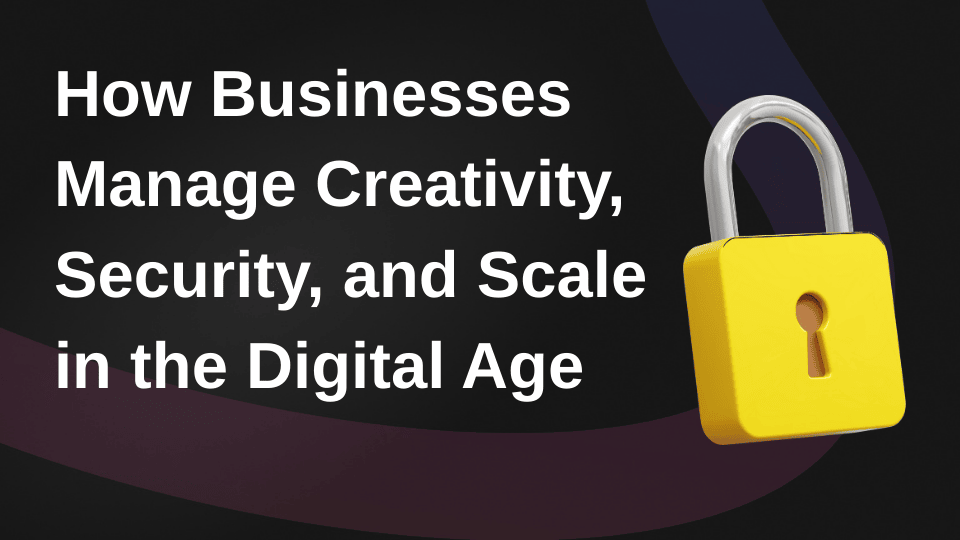In the digital age, optimization is the heart of every successful business venture, so organizations everywhere are striving to streamline essential processes. In the pursuit of peak productivity and efficiency, companies are equipping their employees with sophisticated new tools that can allow them to leverage AI, machine learning, and automation to their advantage. Naturally, this raises some pertinent questions about onboarding.
While some automation-driven tools, such as the Decktopus AI presentation platform, are highly intuitive even to first-time users, the same cannot be said of every application. Depending on the specific type of software in question and the range of features on offer, the initial user experience can vary widely, with more complex tools having far steeper learning curves.
To avoid the pitfall of user abandonment and achieve their optimization goals, companies need solutions that can help them reliably leverage digital transformation as a catalyst for growth, and this is where digital adoption platforms (DAPs) shine.
Here, we'll discuss what DAPs are, their role in workplace efficiency, and potential obstacles to their implementation.
What are DAPs and how do they work?
DAPs are platforms that have been developed to facilitate the seamless integration of new digital tools and technologies. Their purpose is to help users bridge skill gaps and tackle steep learning curves through the provision of real-time interactive guidance and training resources.
In organizations where new technologies are frequently implemented and updated, DAPs help to provide stable and intuitive learning environments for employees. In this way, they empower employees to quickly develop core competencies and achieve proficiency with essential tools, regardless of whether or not they have previous experience with them.
DAPs work by integrating and overlaying with the software tools that employees need to learn. They offer a wide variety of features, including product tours, walkthrough guides, interactive tutorials, and contextual smart tips and instructions, as well as considerable support resources accessible through self-help menus. This enables them to streamline the learning process so that users can focus on optimizing their performance.
Additionally, while all DAPs facilitate onboarding, they may do so in slightly different ways, with unique focuses and target users. For instance, when comparing two market-leading DAPs, WalkMe vs Whatfix, it can be said that the two offer similar experiences with different emphases.
While WalkMe's platform offers extensive customization capabilities for larger enterprises, Whatfix focuses more on ease of integration and setup for quick deployment, which may be better suited to small to medium-sized enterprises (SMEs). Likewise, DAPs can offer functionalities such as analytics, engagement metrics, and product management features to suit their respective target users.
How do DAPs empower workplace efficiency?
By enhancing the onboarding experience, digital adoption platforms benefit workplace efficiency in several key aspects:
- Accelerated time to competency: DAPs reduce the amount of time that employees require to achieve competency and eventual proficiency. As such, they enable employees to achieve higher levels of productivity and optimize their workflows.
- Reduced workflow disruption: One issue with more traditional methods of onboarding, such as classroom-based lessons or seminars, is that organizing them often results in considerable disruption to employee workflows. By delivering onboarding resources and support directly to employees, DAPs mitigate this issue, helping to maintain uninterrupted productivity.
- Increased employee engagement: By providing an interactive onboarding experience that adapts to the needs of the individual user, DAPs help make software training more gratifying and effective. This drives employee engagement, which yields higher productivity. Moreover, it helps to minimize employee turnover, which can disrupt operations and reduce efficiency.
- Continuous learning: Implementing DAPs enables organizations to establish a dedicated support system for employees to engage in continuous learning. That empowers employees to stay up-to-date with software updates, features, and best practices to ensure that they achieve optimal results with the tools at their disposal.
What are the obstacles to implementation with DAPs?
While DAPs are powerful and highly versatile learning tools, they require thoughtful implementation to be truly effective. As such, it's useful to understand some common pitfalls associated with DAPs.
- Employee resistance: Employees may be disinclined to embrace DAPs if they are unclear on their role and value. To avoid this issue, organizations should implement DAPs as part of a wider adoption strategy. This means providing orientation on how and why the technology will be utilized and establishing dedicated communication channels for employee feedback.
- Content management: DAPs enable employees to easily access knowledge bases, but organizations need to create and maintain training content that comprises them. This process has the potential to be resource-intensive if inadequately managed and requires a concerted, continuous effort to ensure that learning resources remain aligned with employees' needs.
- Legacy system integration: Integrating DAPs with older legacy systems can be a complex process, and compatibility issues carry risks of workflow disruption and resource wastage. To ensure seamless integration, organizations should follow a planned integration strategy and utilize appropriate APIs to facilitate integration.
- Data governance: Depending on the applications being deployed at an organization, DAPs may have access to sensitive data assets. To maintain data privacy, security, and integration, businesses should establish clear data governance policies to outline how data should be handled so as to prevent unauthorized access or breaches.
Conclusion
In the modern commercial landscape, optimization is the key to efficiency and, ultimately, business success. In the pursuit of total optimization, enterprises everywhere are seeking to implement sophisticated business technologies, and this brought the need for digital adoption platforms into clear focus.
By providing a frictionless pathway for employees to engage in software training and continuous development, DAPs empower them to utilize digital tools to their fullest capacity. In doing so, they foster efficiency, enabling organizations to extract maximal value from their digital assets.

.svg)
.svg)
.svg)










.svg)






.avif)






.svg)
.svg)
.svg)
.svg)
.svg)
.svg)
.svg)
